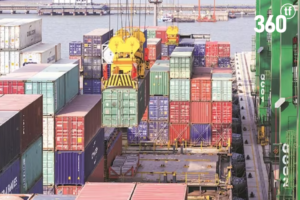September 20, 2023 is a landmark date for the digitisation of trade. The UK’s Electronic Trade Documents Act is now in effect, giving paperless versions of documents such as bills of lading (BLs) the same legal standing as their physical counterparts.
After decades of slow progress – just 2.1% of BLs and waybills were issued electronically last year in containerised trade – the reforms have been hailed as a transformational opportunity to move away from paper, improve efficiency, cut costs and reduce trade’s carbon footprint.
A survey published this week by the Institute of Export and International Trade (IOE&IT) finds that 75% of businesses surveyed believe the Act will have a positive or very positive impact on their business. None said it would affect them negatively.
Lloyds Bank announced in the early hours of September 20 it had already completed what it believed was the first transaction under the Act, issuing a digital promissory note to retailer Matalan to facilitate the purchase of garments from a supplier.
However, uncertainties remain. The Act is deliberately technologically neutral and does not offer prescriptive definitions of the systems that can be used to issue electronic trade documents. The IOE&IT finds that a quarter of business owners are concerned about data security, and nearly a third worry about IT skills and implementation.
And despite substantial industry efforts to encourage adoption, the survey finds that 36% of respondents cite the biggest barrier to progress as “ensuring partners are on board”.
Courtesy: gtreview.com




